If you’ve found your way here, you’re already in tune with something truly special. "Mondholz" isn’t just a name – it’s a journey, a sound and a vision that’s been resonating through the cosmos since the early 1970s. From their experimental soundscapes in the caves of La Gomera to the mystical rhythms of Goa and beyond, their story is as enigmatic as their music. This fan page is dedicated to everything Mondholz – the musical theory, the mysterious travels and the spiritual evolution of Klaus Hartmann and Sabine Müller. Whether you're a long-time listener or new to their otherworldly sound, you’ll find something here to dive into. Explore their albums, the stories behind the music and the elusive, transcendent energy that shaped the Mondholz experience: ethereal bangers for the progressive New Age!

— Table of Contents —
Chapter I: The Musical Theory
Chapter II: The Most Likely Bio Available
Chapter III: Mondholz Gear – Exclusive Photos Here!
Chapter IV: Cosmic Listening Guide

⦶⊖⊕
I. The Musical Theory of Mondholz
Mondholz, a project hidden in an aura of mystique and esotericism, invites its listeners on a transcendent New Age journey through sound. Their music is not merely a collection of notes and rhythms; it is a manifestation of cosmic principles and universal harmony. At the heart of the Mondholz sound lies the concept of "Spheres of Harmony," a theory that draws inspiration from really ancient philosophies and modern interpretations of the universe's structure.
— Spheres of Harmony —
The term "Spheres of Harmony" refers to the idea that every celestial body in the universe emits its own unique frequency and vibration. This concept is rooted in the ancient belief that the planets and stars create music through their movements – a celestial symphony that resonates throughout the Kosmos. Mondholz embodies this philosophy by crafting music that seeks to mirror these cosmic vibrations. Each song is designed to evoke a specific emotion or state of being, connecting the listener to the greater universe.
The project employs unconventional scales and tunings, often utilizing microtones to create a soundscape that feels ethereal and otherworldly. By incorporating these elements, Mondholz aims to transport their audience into a realm where the boundaries between the self and the Kosmos dissolve, allowing for a deeper connection to the universe.
— Cosmic Background Harmony —
In addition to Spheres of Harmony, Mondholz explores the concept of "Cosmic Background Harmony", This idea suggests that beneath the surface of our reality lies an ontologically fundamental harmony that connects all living beings. Just as the cosmic microwave background radiation is a remnant of the Big Bang, the band believes that every note, every chord, and every silence carries the essence of this primordial harmony.
Through their music, Mondholz seek to tap into this background harmony, creating a sound that resonates with the listener's inner self. Their compositions often feature layered harmonies and rich textures, inviting listeners to immerse themselves in a sonic experience that transcends the ordinary. The use of natural sounds, such as wind, water and animal calls, further enhances this connection to Earth's own harmony.


⦶⊖⊕
II. The most likely Mondholz bio available
In the early 1970s, the musician Klaus Hartmann and the artist Sabine Müller met in West Berlin. Both were deeply involved in the emerging Krautrock and Cosmic music scene, drawing inspiration from bands like Tangerine Dream, Cluster and Ash Ra Tempel. However, the cold, gray Germany increasingly seemed to them like a spiritual prison and so they set out in search of transcendental and artistic liberation.

Sabine Müller and Klaus Hartmann aka Mondholz, exact date unknown.
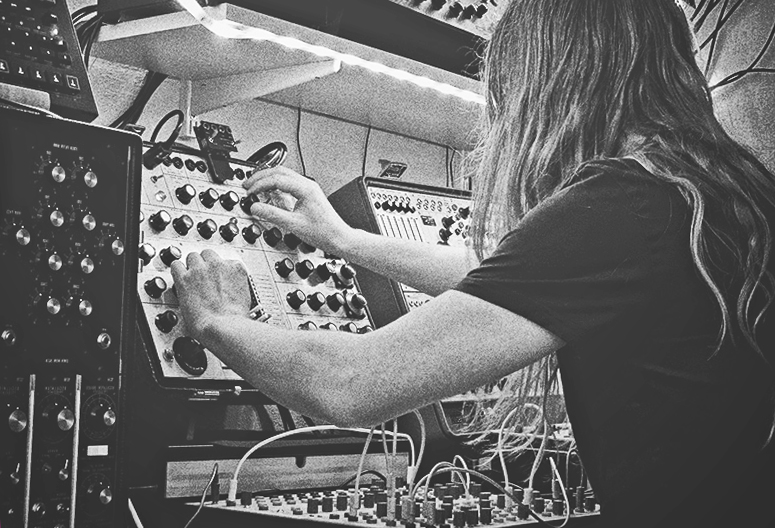
In search of Cosmic Harmonies, c. 1972
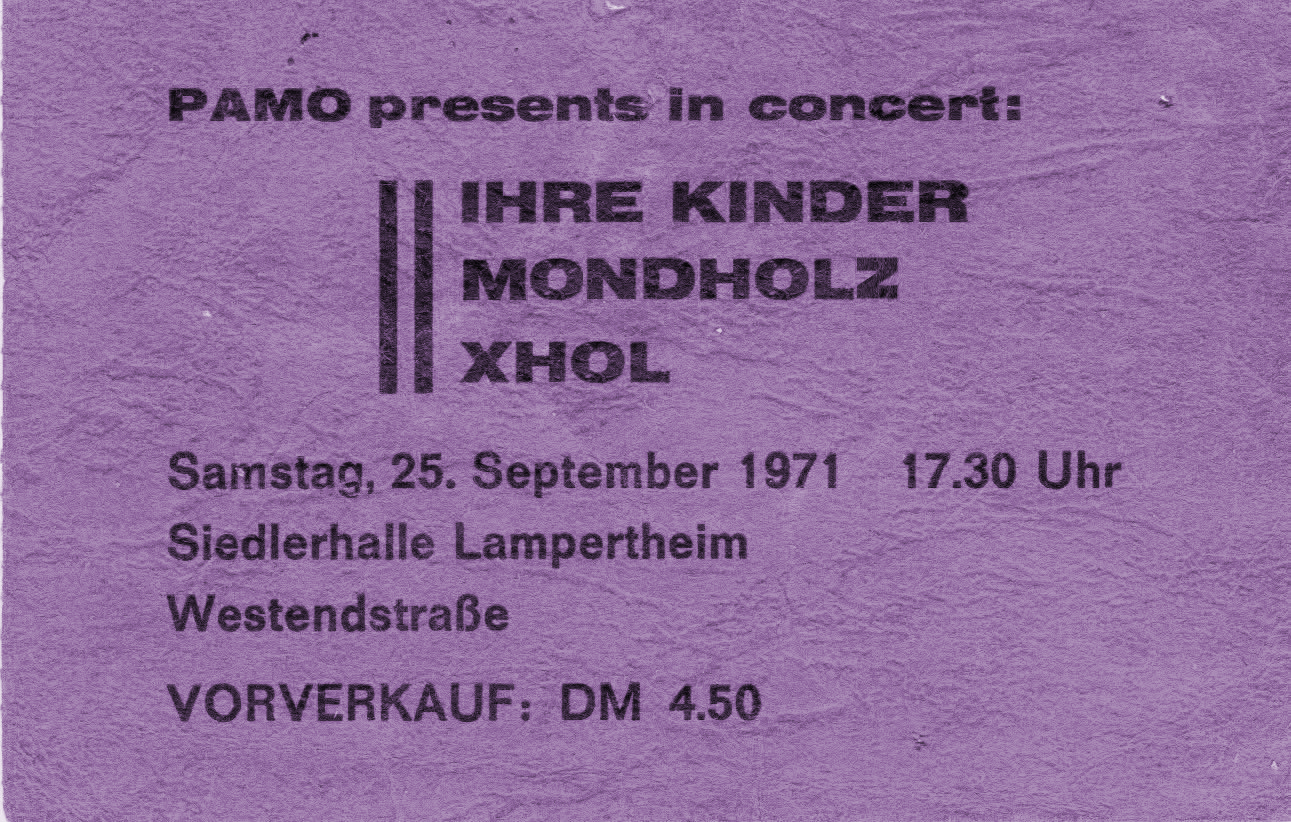
Ihre Kinder, Mondholz and Xhol live in Lampertheim/West Germany, 1971
—A Journey to the Canary Islands —
Initially, they settled on La Gomera, where they lived in a secluded cave in the cliffs near Valle Gran Rey, an area that was notorious at the time for its counterculture scene. Surrounded by the rugged nature and inspired by the spiritual communities that gathered there, the couple began recording meditative sound experiments, which would later be regarded as their first album, simply titled Mondholz and still deeply rooted in the Krautrock tradition. These recordings are considered lost. During this time, they also came into contact with esoteric ideas that were widespread in the hippie and New Age circles of the time. Sabine, in particular, was fascinated by the theosophy of Helena Blavatsky and the occult writings of Rudolf Steiner. Klaus delved into the idea of Atlantis as the cradle of a lost, highly spiritual civilization, a theme that would later be reflected in pieces like "Die Tore von Ultima".
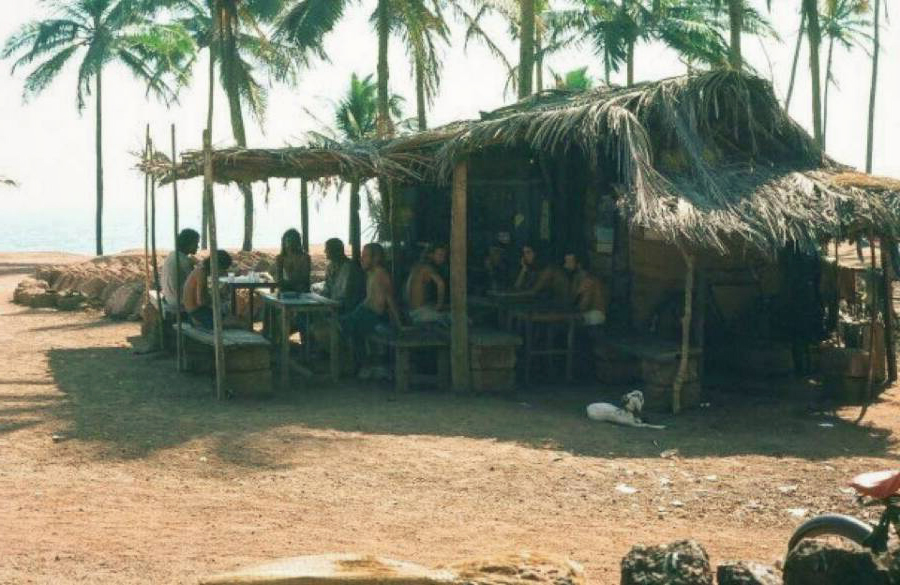
Chai shop in north Anjuna/Goa, 1975.
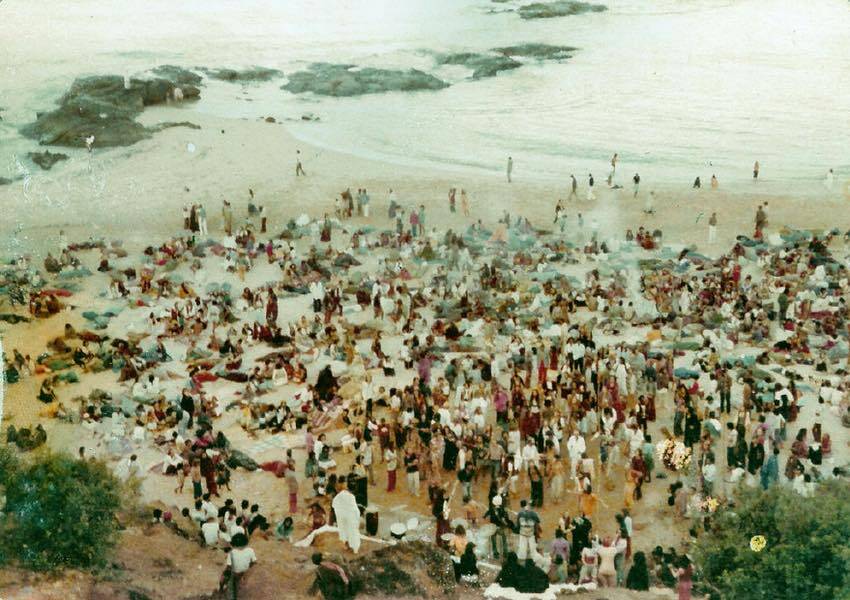
Full Moon party in Anjuna/Goa, 1975.
— India and the Emergence of the Goa Scene —
In 1975, Klaus and Sabine followed the call of the East and embarked on a months-long journey along the legendary Hippie Trail to India. This journey would profoundly influence their music and spirituality. They traveled through sacred sites like Varanasi and Rishikesh, where they meditated with sadhus and yogis. Their time in Goa was particularly formative, as it was then a secret haven for international hippies. There, they encountered legendary beach parties where psychedelics, spiritual experiences and music merged into a single unity.
There are contradictory accounts of this phase, but it is most likely that Klaus and Sabine began developing the first ideas for their later musical style, which was heavily influenced by Indian mysticism and Goa. Their time in India is also said to have involved some mystical experiences, which they later described in cryptic interviews.
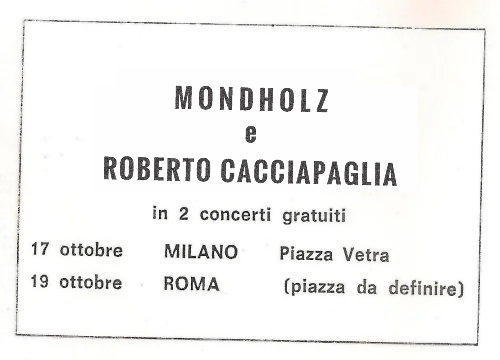
Mondholz and Roberto Cacciapaglia, free concerts, Milan and Rome, 1973

München/West Germany, 1974
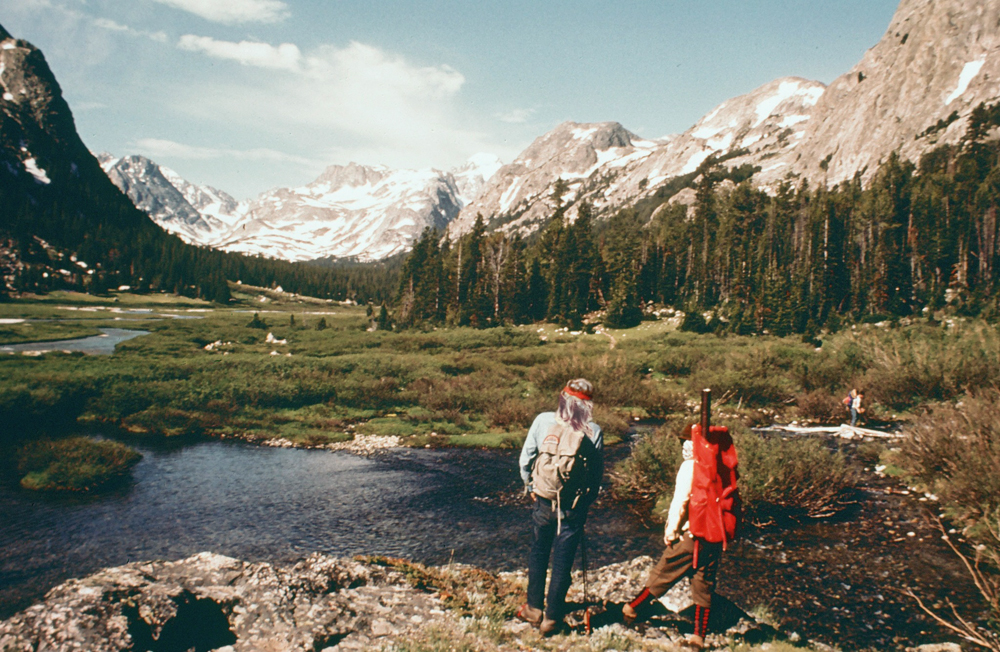
Hiking in the USA, late 1970s

Performing in New Orleans USA, late 1970s
— USA trip —
During another trip in the late 1970s, they made contacts with the Californian New Age scene surrounding the Whole Earth Catalog, where they experimented with pioneers of synthesizer technology. They combined these influences with the emerging technologies of the synthesizer scene: their sound became increasingly shaped by strange harmonies and the ideas of a mystical "Mana Energie" which they saw as a universal, creative force – a vision they connected with their own spiritual journey.
It is suspected that Klaus and Sabine not only made their first contacts with the early synthesizer pioneers in California but were also part of an informal circle of musicians and spiritual seekers, which – until today – has not been fully documented and which is considered a precursor to the later Goa scene. However, there is no clear evidence to confirm the couple's direct involvement in the creation of this scene. During his stay in the USA, Klaus Hartmann might have worked for a few months as a research assistant at the Massachusetts Institute of Technology and possibly made contact with the members of the Tech Model Railway Club (TRMC). Engaging with these tinkerers and early computer hackers, along with access to their workshops, likely played a key role in helping Mondholz refine their early synthesizers. According to some, partially contradictory reports from former companions, during a two-week stay in New Orleans on their way back, they were also in contact with The Process Church of Mary Ann MacLean and Robert de Grimston, or with the Best Friends Animal Society. However, there is no reliable confirmation of a meeting between the two couples.
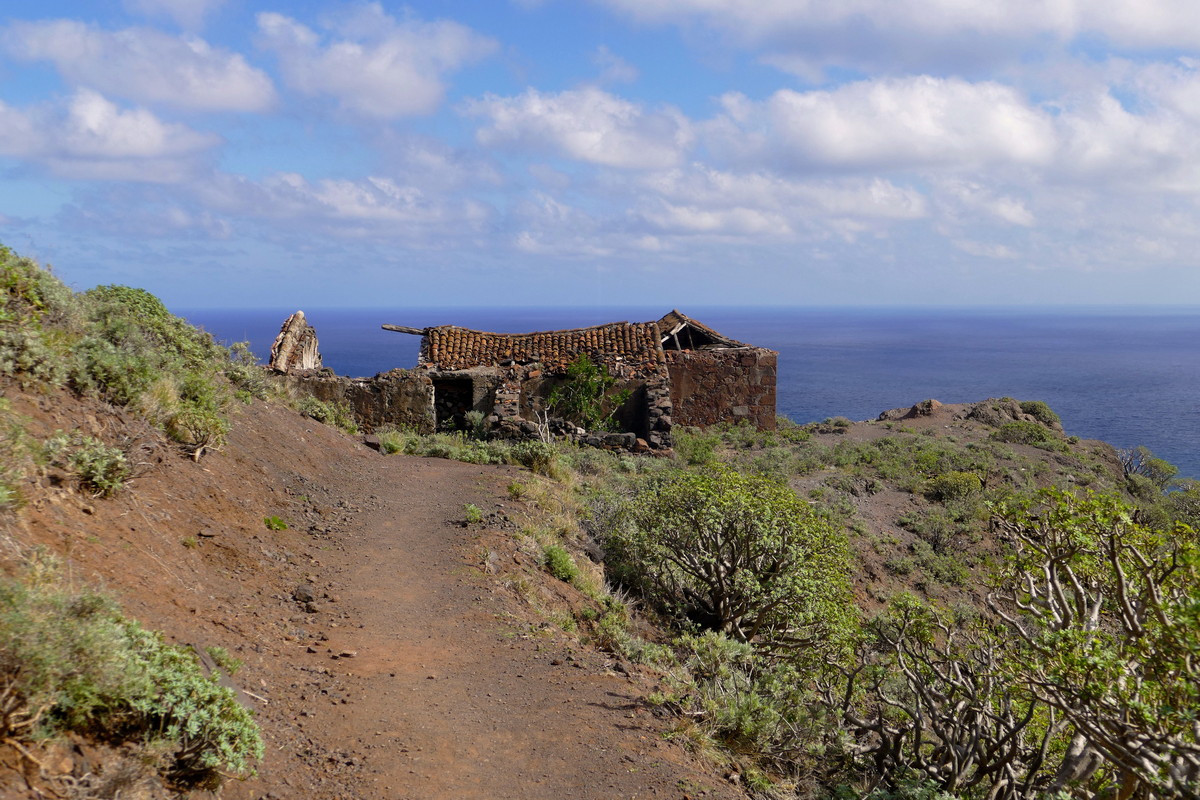
Former "Casa Atlantea", the surrounding primeval forest is cleared today
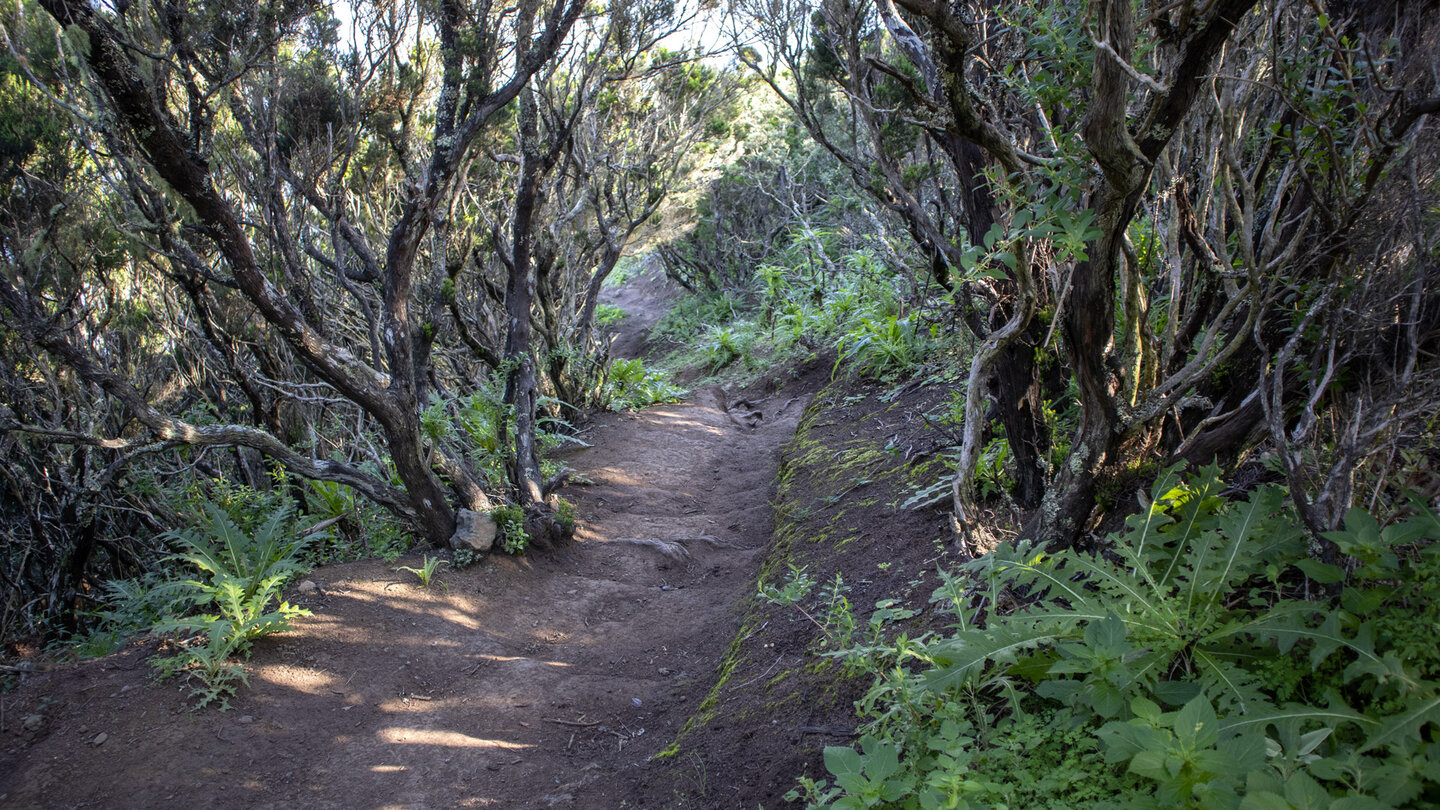
Hiking trail on the Canary Islands
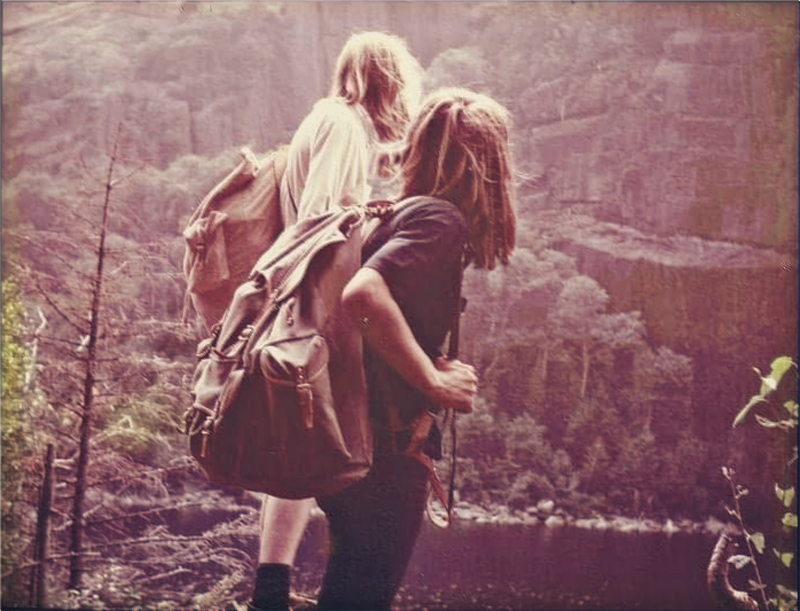
Mondholz on a hike in Tenerife's forests, late 1970s
— The "Casa Atlantea" as a Meeting Point —
Back on the Canary Islands, they moved to the neighboring island of Tenerife, where they lived in a semi-ruined finca in the ever-green laurel forest of the Anaga mountains. This finca, which they painstakingly renovated, became their creative center. Klaus set up an improvised sound studio in one of the rooms, while Sabine painted the walls with mandalas and mystical symbols. The Casa Atlantea quickly became a meeting point for like-minded individuals, who attended yoga and meditation workshops, concerts or lectures (including those of the controversial sect Die Lichtwandler). Surrounded by the sounds of nature – the rustling of leaves, bird calls and the distant thunder of the ocean– their second album "Invocation of Cosmic Resonance (Atlantean Echoes)" was recorded, featuring groundbreaking proto-electronic tracks like "Sonic Atlantis" and "Fluss der Zeit". According to an interview with Dietmar Burmeister (temporary drummer with Ash Ra Tempel) in German music magazine "Sounds", negotiations with Rolf-Ulrich Kaiser's renowned record label "Ohr" took place during these years. However, these talks came to nothing.
In the midst of this creative bloom, both delved further into esoteric ideas: Klaus became increasingly convinced of the existence of a secret world government by higher beings, triggered not least by manic-paranoid episodes, while Sabine linked her beliefs from anthroposophy with spiritual art. One track on their second album carries the cryptic title "Die Tore von Ultima Thule" and contains choral passages in an invented language, supposedly based on visions of a lost continent. Klaus' attempt to publish a five-part lecture and workshop series under the unwieldy name "Mondzeitalter. A Cassette Programme for the New Consciousness"., a five-part series of lectures and workshops in cooperation with the publishing house Aviva W. Dahlberg, failed due to a lack of demand, not least because of the comparatively high price of 60 Deutsche Marks.
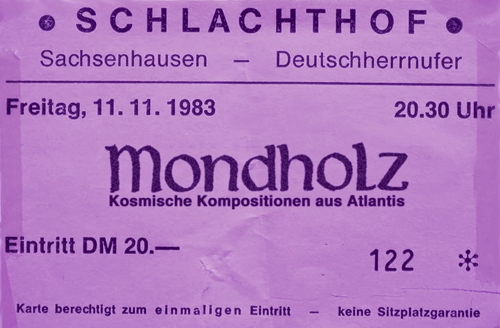
Schlachthof Sachsenhausen, 1983
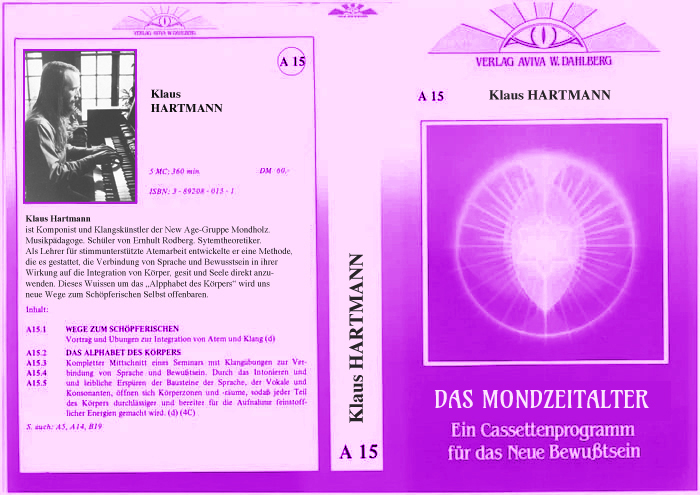
Mondzeitalter. A Cassette Programme for the New Consciousness
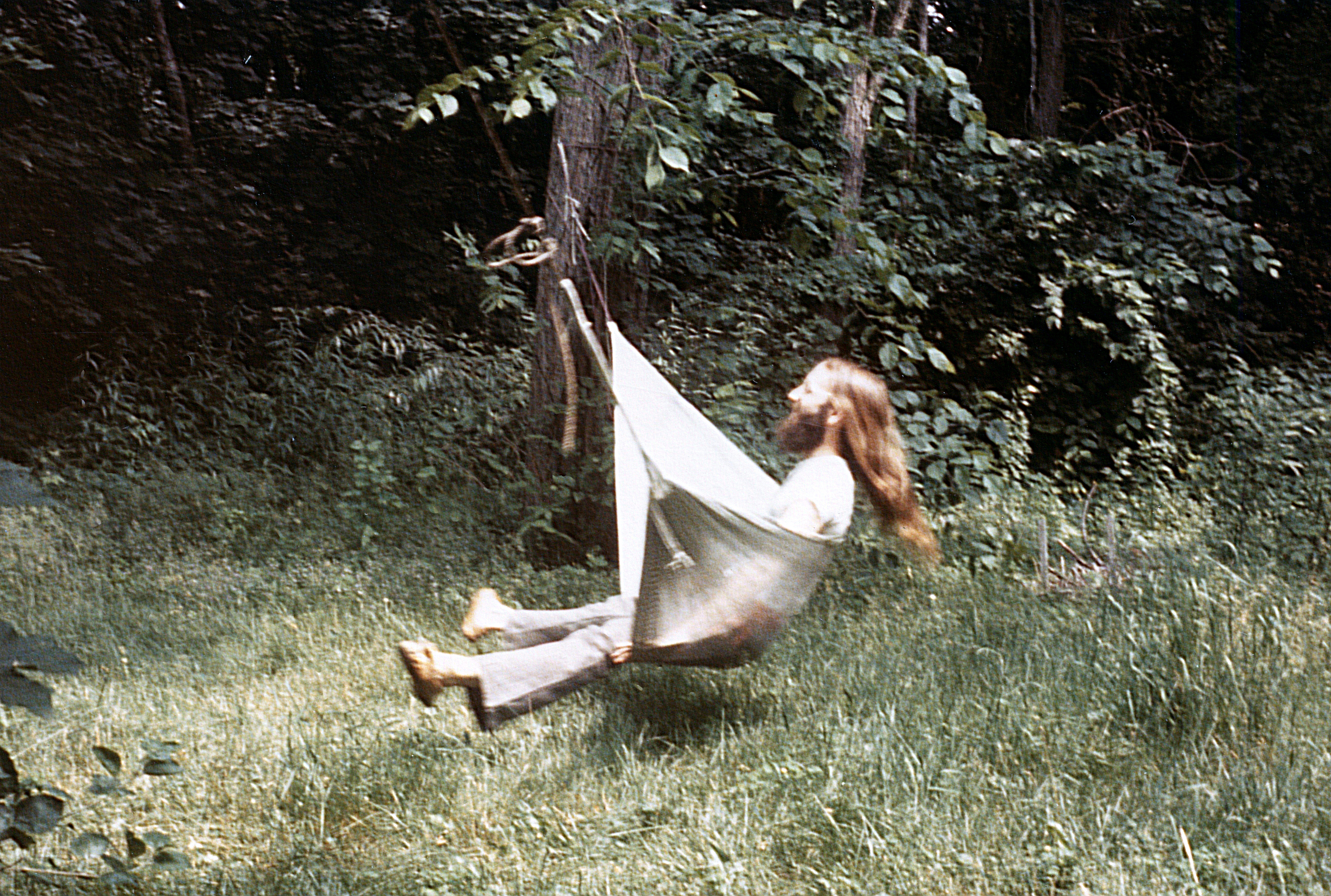
Klaus in full swing, c. 1981
— Return to Germany —
In the 1980s, Klaus and Sabine had to give up their finca on Tenerife due to financial difficulties and trouble with the tax authorities and they returned to Germany. For the next few years, Hartmann and Müller lived as nomads without a permanent home, traveling in an old VW bus and staying in Goa-inspired communes. There they encountered a new generation of musicians and organizers inspired by the Goa parties of the 1970s and 1980s. Particularly in the early Goa scene in Germany, which emerged from 1990 onwards, they were likely active as "Spirituelle Mentoren" (spiritual mentors) and musical messengers. Their experimental sound collages were played in the chill-out areas of Goa parties and there are reports that Klaus and Sabine supported early parties in southern Germany with modular synthesizers and light installations.
However, there are no reliable records of how intensively they were actually involved in the early Goa scene. Some reports speak of their early support, while others point to an increasing isolation of the couple. In any case, their music found a place in the mystical, meditative chill-out rooms that would become so formative for the Goa scene of the 1990s. Contradictory statements point to Klaus' irregular lecturing activities in early sociological Systems Theory circles, which could presumably go back to his employment as a research assistant at MIT. But there is no concrete evidence of either lectures or scientific publications. An attempted collaboration with a nearby Waldorf school ultimately fell through, and their effort to build a business around importing Himalayan salts floundered due to a lack of demand, forcing the couple to seek other sources of income.

— Sphärenklang TV and "Botschaften des Kosmos" —
In the mid 90s Sabine, who became deeply involved with channeling, claimed to be in contact with beings from higher dimensions, who transmitted visions about the "Große Kosmische Reinigung" (Great Cosmic Purification) to her. During this phase, Sabine attempted to earn additional money through Yoga courses and an esoteric TV channel. Over a small regional station, she offered live channelings, where viewers could receive messages from alleged spiritual beings for high telephone fees. Her show "Botschaften des Kosmos" was only moderately successful and was discontinued after a few months. Critics from the esoteric scene accused Sabine of prioritizing financial interests over spiritual values, which damaged her reputation. Sabine's attempt to capitalize on the yoga and fitness boom of the 2000s by reworking Swedish gymnastics exercises into supposedly millennia-old Vedic exercises fails. These money-making attempts and their increasingly apocalyptic ideas eventually led to the couple becoming more and more isolated, even within the esoteric scene.
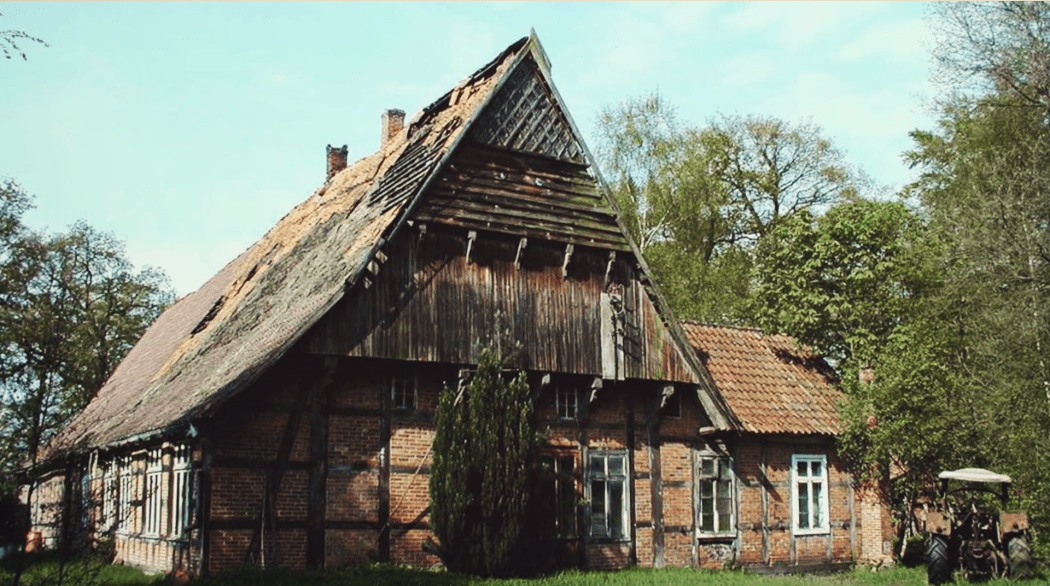
Resthof im Wendland, front c. 1989

Resthof im Wendland, kitchen c. 1989
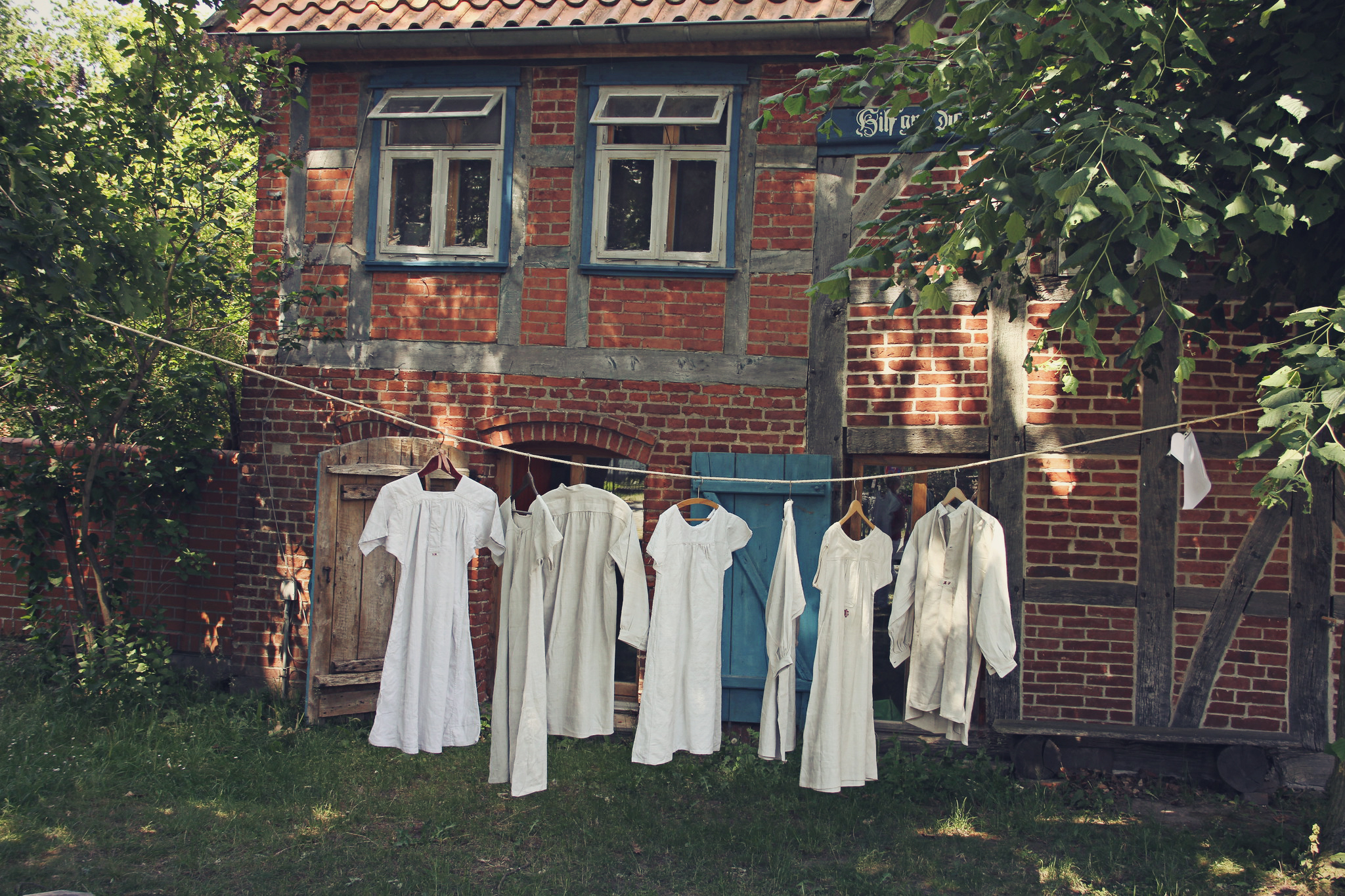
Resthof im Wendland, laundry day, c. 2001
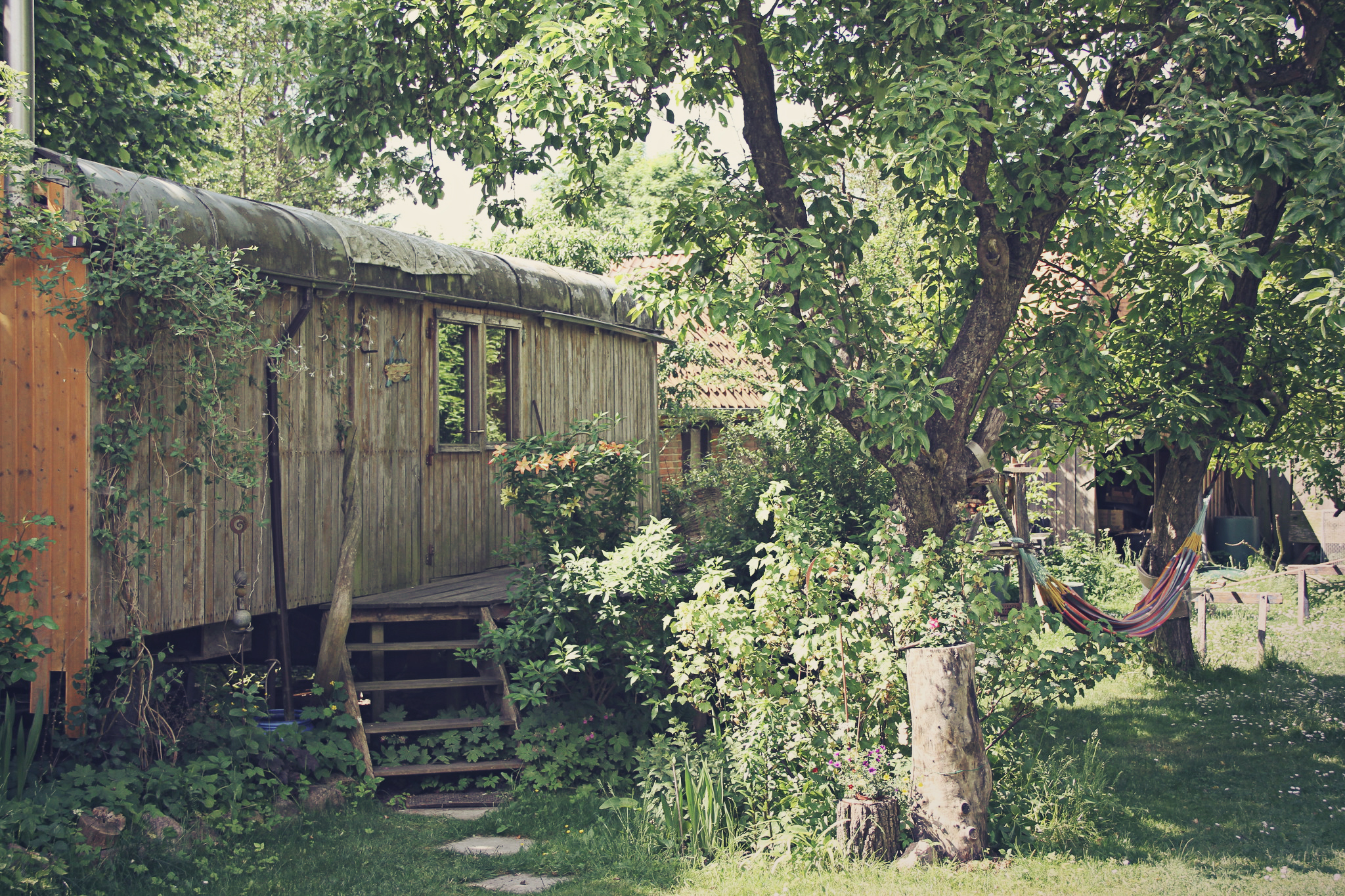
Resthof im Wendland, garden, c. 2001
— Retreat to old farmstead in Wendland —
Today, the duo lives in seclusion on a remote farm in Wendland district of Lower Saxony, where they are said to be devoted to breeding sheep and restoring antique furniture and modular synthesizers. Their early music is considered an obscure treasure by connoisseurs, yet much of their past remains a mystery. It fluctuates between spiritual searching, ideological depths and their diverse influence on music history. It is one of history’s ironies (or perhaps karma at work?) that Mondholz never managed to capitalize on their visionary sound, a sound later refined and successfully commercialized by artists like Vangelis, Enya, ERA and Enigma. Their complete withdrawal from the world was a key factor. Some sources claim they have had no public contact in years and have even distanced themselves from their oldest followers, while others suggest they are still engaged in mystical projects—though these have never fully emerged into public view.
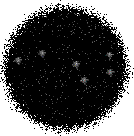
III. Exclusive photos: the gear of Mondholz!
What you see here are a few rare and fascinating photos of Mondholz's recording equipment, taken inside their secluded studio in the heart of Wendland. These images, shared by a close friend of the enigmatic duo (who has chosen to remain anonymous), provide a unique insight into the creative sanctuary where Klaus Hartmann and Sabine Müller continue their explorations of sound and spirit. These photos, though few in number, serve as a window into the private world of two of the most enigmatic figures in experimental music. While they may be living in isolation, these images remind us that the cosmic echoes of Mondholz still ripple through their quiet corner of the world.
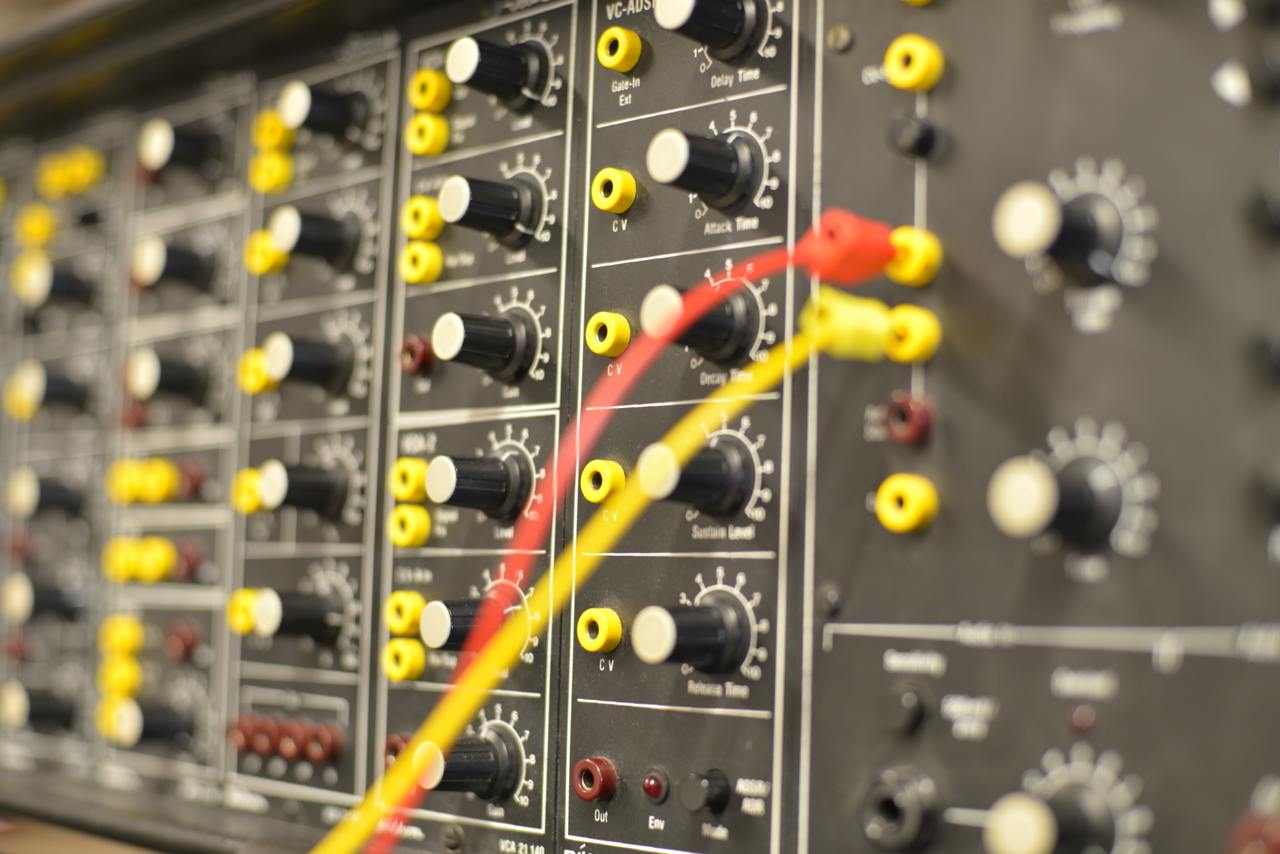
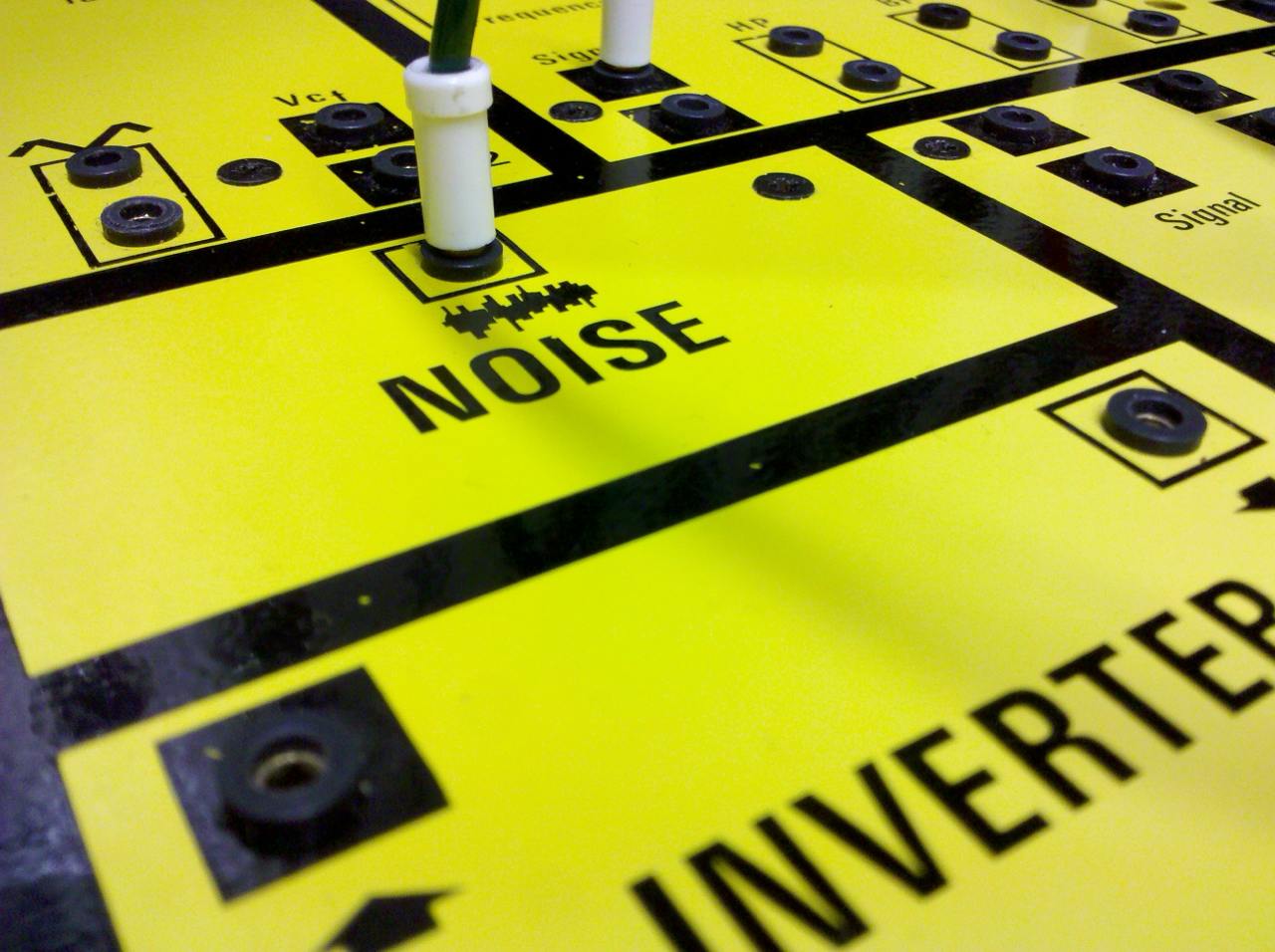
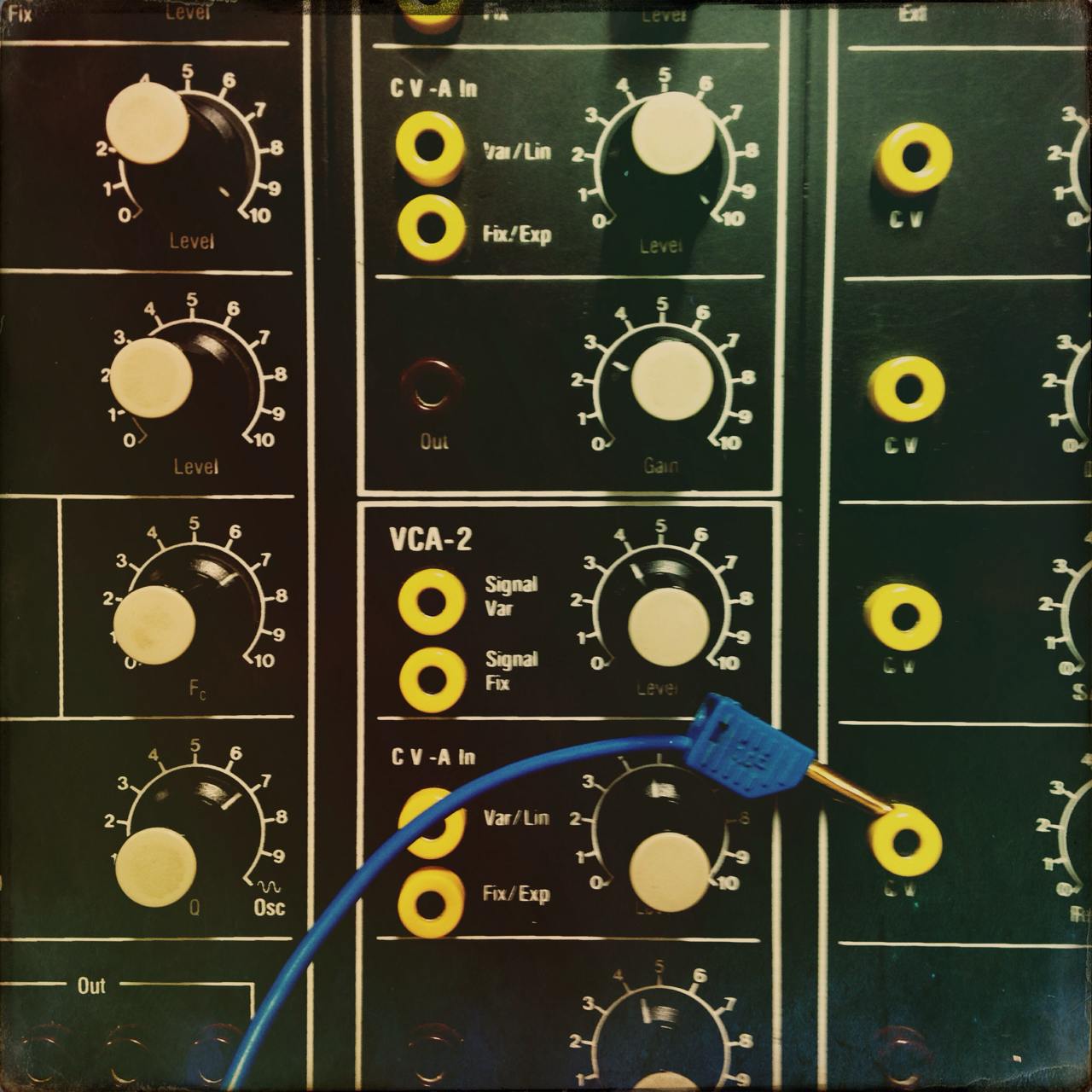
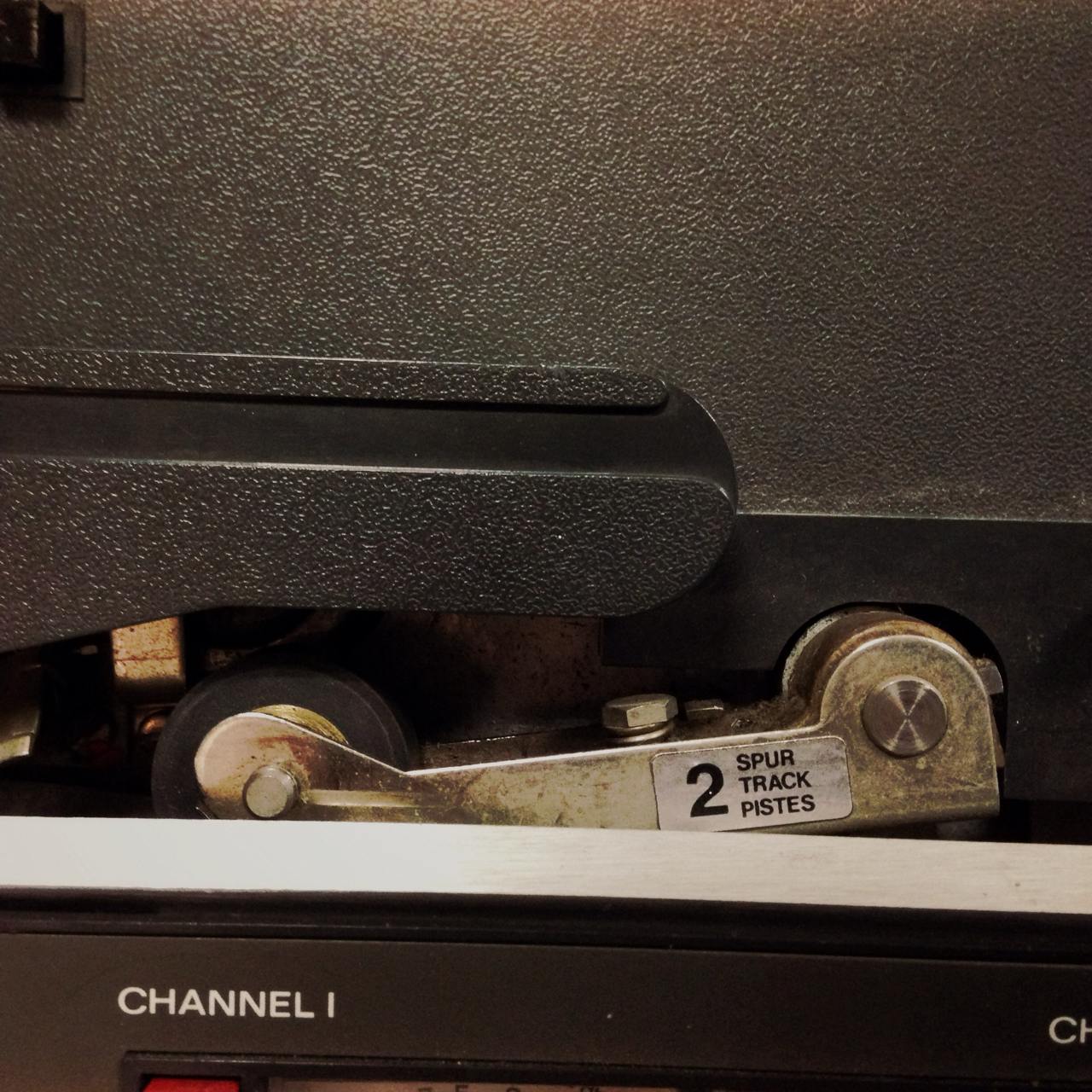
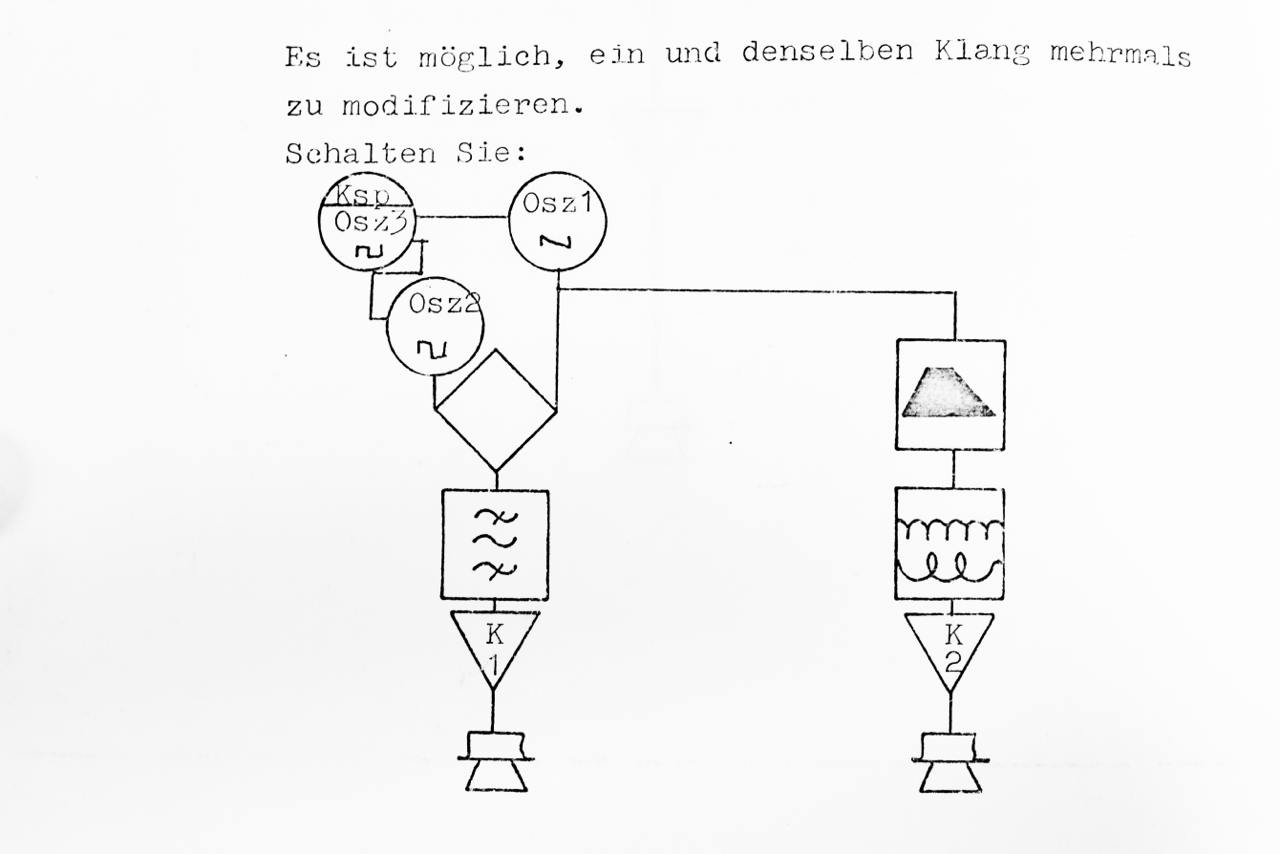

IV. Cosmic Listening Guide
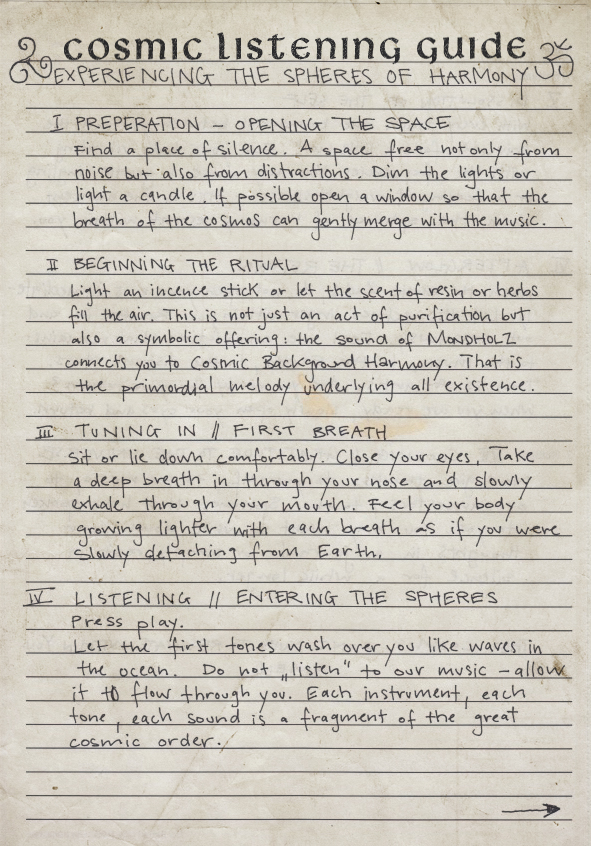

⦶⊖⊕
You are visitor


The whales are not what they seem!





Last updated: January 19, 2011
Proudly Made with Neocities and Windows 95!










































